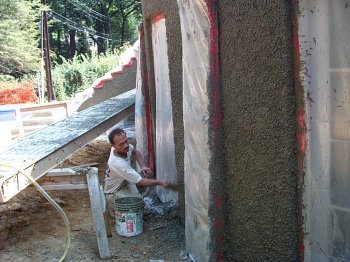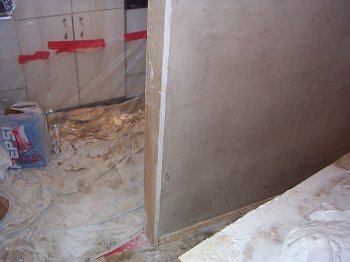Jobs in progress-updated
October 7, 2000
A plaster addition in
Arlington, Virginia
Veneer plaster is an
excellent alternative to drywall.
 |
 |
 |
Veneer
plaster (blueboard).
We're plastering a new addition
and patching the exististing house.
Top left: Veneer basecoat
applied
to blueboard.
Top right: White coat in family
room.
Bottom right: finished kitchen.
|
Monique's apartment
Washington, DC
Pebble dash stucco
Washington,
DC and a
plaster fire place in historic
house
Alexandria, Virginia
 |
 |
| A stucco garage in
Washington,
DC |
Finished fire
place in historic
house
from last update. Outside corner
is formed with wood strips instead
of metal corner beads. They didn't
have metal corner beads in the
1700's. |











